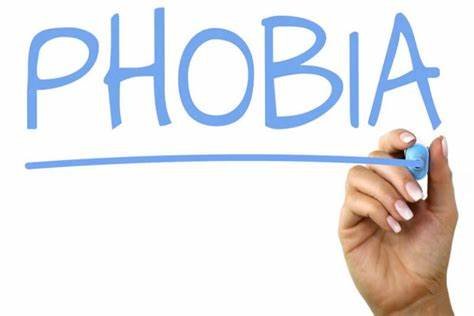The Influence of Social Media on LGBTQ+ Identity
In today’s digital era, social media platforms like Instagram, TikTok, and others have provided spaces for self-exploration and expression that were previously inaccessible. A particularly fascinating trend is the celebration of physical bodies on these platforms, often in ways that challenge traditional notions of sexuality, gender identity, and desire. Among these shifts is the increasing visibility of bodybuilders, fitness influencers, and individuals who regularly display their bodies, contributing to new discussions about how social media is influencing people’s exploration of sexual attraction, particularly same-sex desires.
These platforms offer users a constant stream of curated images and videos—people flexing, posing, and showcasing their physiques in ways that invite admiration and sometimes curiosity. The exposure to diverse representations of bodies and sexualities allows for greater openness and exploration of one’s own desires, helping dismantle barriers that once kept same-sex attraction hidden or unacknowledged.
Social Media and LGBTQ+ Visibility
Social media has become a powerful force for normalizing LGBTQ+ identities and desires, making it easier for people to explore and express their attractions. Instagram, with its visually driven interface, serves as a significant platform where users express sexual attraction, often through images of people showing off their bodies—whether in fitness posts, fashion, or personal self-portraits. The normalization of admiring others’ physiques, regardless of gender, has helped many users feel more comfortable acknowledging their own same-sex attraction.
Historically, exploring same-sex attraction was often met with societal stigma, fear of rejection, or internalized shame. Today, however, platforms like Instagram allow users to witness others openly celebrating their bodies and desires, creating a ripple effect. Users are more inclined to explore their own feelings and desires in this judgment-free space, even if they hadn’t previously considered themselves part of the LGBTQ+ community.
The Flex Culture and Physical Attraction
A significant component of this shift in attraction is the growing “flex culture” on Instagram. In this space, fitness enthusiasts and bodybuilders post images and videos that showcase their physiques—highlighting muscle definition, symmetry, and strength. This visibility has not only motivated many individuals to work on their own fitness but also contributed to a culture where physical admiration and attraction are increasingly fluid.
For some, admiring these flexing bodies may start as a simple appreciation for the dedication and aesthetic, but it can evolve into an exploration of deeper attractions. The visually engaging content—especially in a context that celebrates diverse expressions of beauty and strength—often leads users to question previously fixed notions of attraction. As individuals double-tap and follow accounts of fitness influencers or bodybuilders, some may begin to realize that their admiration is not just an aesthetic appreciation but could be linked to unacknowledged desires.
Bodybuilders, Posing Sessions, and Attraction
Bodybuilding culture celebrates the human body in its most extreme and sculpted form. Dedicated bodybuilders spend years perfecting their physiques through rigorous training, meticulous diets, and a strong focus on aesthetic excellence. Posing sessions are where these athletes showcase their hard-earned results, flexing and highlighting muscles to create the most visually striking presentation of their bodies.
Social media has given bodybuilding a larger stage than ever before. Bodybuilders now post their progress, workout routines, and posing sessions to audiences well beyond the fitness world. Instagram, in particular, has become a go-to platform where bodybuilders share their sculpted physiques and attract thousands of followers, many of whom admire their commitment to physical transformation.
For viewers, these images of flexing bodybuilders go beyond mere admiration of physical achievement. The carefully choreographed posing routines, focusing on muscle definition, symmetry, and power, can provoke feelings of awe, admiration, and sometimes desire. Posing sessions, with their focus on maximizing the aesthetic appeal of the body, often blur the lines between physical appreciation and attraction. This dynamic is particularly noticeable for individuals who, through exposure to these performances, start to explore same-sex attractions they hadn’t previously considered.
The Intersection of Bodybuilding and Desire
The extreme physicality associated with bodybuilding, especially in the display of hypermasculine or hyperfeminine bodies, can trigger complex reactions in viewers. For many, the sight of these extreme physiques evokes a deeper emotional and personal response, especially when the boundary between admiration and desire becomes less clear.
Posing sessions, especially when shared on social media, provide a sensory experience that highlights every contour, vein, and texture of the body. For some viewers, the visual display leads to unexpected realizations of attraction to the same sex, even if they hadn’t previously identified as LGBTQ+. Social media has made it easier for users to explore these feelings without the fear of judgment, offering a normalized environment where admiration of physical beauty—whether same-sex or otherwise—is socially acceptable.
LGBTQ+ Bodybuilders and Self-Discovery
LGBTQ+ bodybuilders and fitness influencers have played a critical role in reshaping the bodybuilding world, fostering a more inclusive and diverse culture. Through social media, these individuals not only share their physical achievements but also tell stories of self-acceptance, struggles with gender identity, and body image. Their presence has created an environment where people feel more open to exploring their desires, regardless of sexual orientation or gender identity.
The visibility of LGBTQ+ bodybuilders challenges the traditional notion of extreme masculinity or femininity. By breaking down these barriers, they demonstrate that beauty, strength, and desire are not restricted to narrow definitions. Their content has helped foster an environment where people feel more open to exploring their identities, leading to greater self-discovery and acceptance of fluid desires.
Social Media and Fluid Sexual Desire
Perhaps one of the most profound impacts of social media is the normalization of fluid sexual desire. As users scroll through a constant feed of fitness influencers, bodybuilders, and others showcasing their physiques, they may begin to realize that their attractions are not as rigid as once thought. Social media’s diversity of representations of gender, beauty, and sexuality allows people to explore their own desires in ways that were previously inaccessible.
Instagram and other platforms provide a space for users to engage with content that challenges their perceptions of attraction, sexuality, and beauty. The exposure to various forms of physical beauty, particularly in bodybuilding culture, can lead to a more in-depth exploration of sexual orientation and attraction. This journey of self-discovery can be empowering, allowing individuals to embrace desires they may have previously suppressed or misunderstood.
Conclusion: Social Media and the Evolution of Desire
In the digital age, social media has fundamentally transformed how we perceive desire, sexuality, and identity. Platforms like Instagram have provided new ways to explore and engage with the human body, enabling users to express and explore desires that may have once been hidden or suppressed. Bodybuilding, with its emphasis on physical beauty and strength, offers a unique lens through which to examine these shifts in attraction and identity.
While social media doesn’t create sexual attraction, it provides a space where people can safely and anonymously explore their feelings without fear of judgment. The visibility of LGBTQ+ influencers, bodybuilders, and the normalization of admiring same-sex bodies have created an environment where people feel more comfortable acknowledging and embracing their fluid desires.
The cultural shift brought about by social media has encouraged more people to explore their identities in meaningful ways, leading to a more inclusive and diverse understanding of human sexuality. Through the display of bodies, beauty, and desire, social media has opened new doors for self-expression and self-discovery, allowing people to connect more deeply with themselves and others.
Max E. Guttman is the owner of Mindful Living LCSW, PLLC, a private mental health practice in Yonkers, New York.
- Max E. Guttmanhttps://mentalhealthaffairs.blog/author/max-e-guttman/
- Max E. Guttmanhttps://mentalhealthaffairs.blog/author/max-e-guttman/
- Max E. Guttmanhttps://mentalhealthaffairs.blog/author/max-e-guttman/
- Max E. Guttmanhttps://mentalhealthaffairs.blog/author/max-e-guttman/







